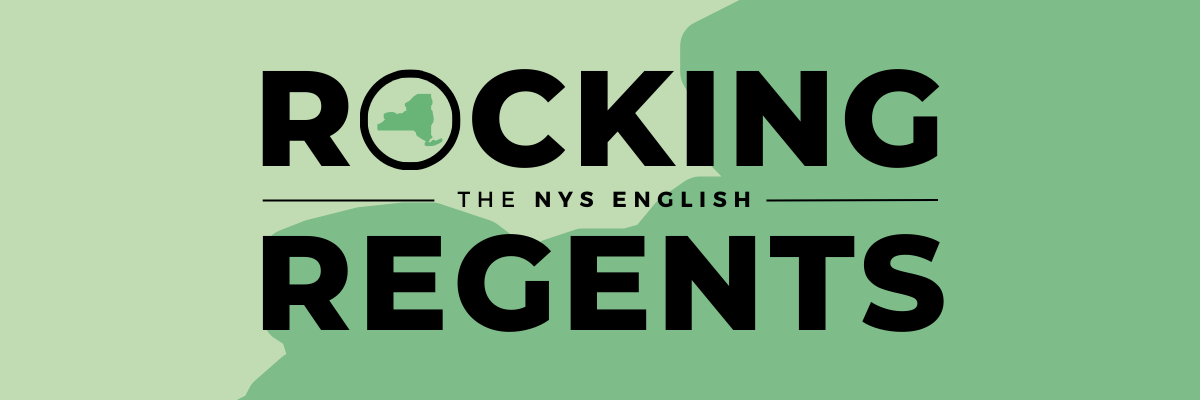|
Part 1 of 3 | A summary of the biggest adjustments coming to New York schools, including new accountability designations and new metrics to measure school performance.
A few weeks ago, the New York State Education Department released a memo outlining the changes to school accountability measures as a result of the legislation from the 2015 Every Student Succeeds Act, which has replaced the widely known No Child Left Behind Act from 2001.
There are a few people, like myself, who geek out about education policy, and we’ve been waiting for this moment since President Obama signed the Every Student Succeeds Act (ESSA) into law in 2015. No Child Left Behind (NCLB) imposed strict policies and guidelines for states to hold schools accountable for meeting student performance expectations, or face very real consequences. These consequences ushered in what I’ve described as the “Accountability Era” where school leaders, and teachers are held personally responsible for student performance on state tests. Where NCLB established federal expectations for testing and achievement benchmarks, ESSA removes the federal government from the equation and puts states back into the driver’s seat when determining what policies should be enacted in the state. Educators have been diligently watching the news to see how states are determining their priorities and expectations for their schools.
Like many other states, New York has been following an implementation timeline that has held steady on NCLB expectations while working to restructure a state system that policymakers can agree to, with input from the public. Though the NYS ESSA plan was approved earlier this year, there haven’t been many details as to how the new plan would be implemented, or how it might directly affect schools.
That is, until last month, when the NYSED released a set of changes related to ESSA. The 21-page memo is largely a technical manual, outlining the new system for school accountability in the state, new metric systems, and new designations for identifying schools who are below, meeting, or exceeding state expectations. I would never discourage anyone from reading the primary source, but most teachers and school leaders will likely find themselves a bit too busy to pore over all the formulas and definitions outlined there. If you’re interested in the understanding the changes, but don’t have the time to review the entire memo, we’ve put together a summary of some of the biggest adjustments coming to New York schools, including new accountability designations and new metrics to measure school performance.
Change #1: New accountability categories
As of October 2018, NCLB’s categories like Priority School or Focus School have been discontinued, and have been replaced by the categories Comprehensive Support and Improvement (CSI) and Targeted Support and Improvement (TSI). The state explained that schools will receive a new designation before the end of December 2018. Comprehensive Support and Improvement is specifically for schools that fall in the bottom 5% of performance for the “all students subgroup, or have a graduation rate of 67% or lower. One notable change is the identification of CSI schools based on how they compare with other schools across the state, rather than marking their progress against their school’s individual goals. Under NCLB, schools were given an accountability ranking based on their ability to meet their own unique target goals. The shift to focusing on a schools within the lowest 5% shifts the focus from an internal benchmarking system to an external benchmarking system where schools only need to be better than those in the lowest 5%. Likewise, schools that have seen major increases in performance, but struggle with the neediest populations, are likely to have a difficult time showing their growth in the shadow of traditionally high performing schools.
Change #2: Indicators for evaluation
During the NCLB era, schools were evaluated on annual test scores in English Language Arts and Mathematics, as well as graduation rates. Under ESSA, New York has broadened the number of measures that will be used for evaluating school performance to include five indicators for elementary and middle schools, and six indicators for high schools.
Each of these new areas of measurement taps into a host of new questions about how the state is defining student achievement and teacher performance. While we don’t yet have a full picture of how the evaluations will be structured at the state level, this basic blueprint helps us to identify the new and continuing expectations for school performance.
Coming soon: we’ll delve into additional components of this legislation, including the exploration of the state’s approach to setting annual and long-term goals, as well as new formulas for determining a school’s performance index. Stay tuned! For more support with strategic planning in response to ESSA, connect with us at cpet@tc.edu / 212.678.3161, or join Dr. Kang for an upcoming session of Exploring ESSA.
If nothing changes, nothing changes.
I was walking down the hallway of one of our classic New York City high schools, talking with a teacher who was struggling with classroom culture issues. They were explaining that day in and day out, it was the same thing with the same kids. I stopped dead in my tracks, turned to the teacher, and said, “The thing is — if nothing changes, nothing changes.”
I wasn’t trying to be clever, it just seemed so clear and simple to me in that moment. If nothing changes, nothing changes. Why would we ever expect anything to change if we do not bring something new or different to the classroom? If we do not see our students differently, or if we do not speak to them differently? If we do not teach them differently?
The clearer this concept became in that moment, the clearer I saw this simple truth in all areas of my professional and personal life. I realized that when we have a goal that we want to reach, we must be the first to change our mindset and our actions. This is as true for school leaders working with teachers, administrators, and teacher leaders as it is for teachers working with students.
When I recently had the opportunity to support a group of teacher leaders and administrators in a three-day institute at Teachers College, I wanted to focus on helping them develop a strategic plan for school change. We knew that nothing would change if nothing changed — but we weren’t quite sure what should be changed first, which is why we developed a three-step process for our work. This process allowed us to reflect on the challenges that were having the biggest impact in their school community, and work collaboratively to develop strategic solutions.
Step 1: Identify your leverage area
Before developing a solution, we need to determine the underlying problem and the ultimate leverage area. Using our 5 Whys protocol, we can dig below the surface and identify the root cause of our challenge, which leads us to a new understanding of the problem. The 5 Whys begins with a basic statement of the problem, then prompts critical reflection to consider why this problem exists, in five rounds. While working through this process, we want to keep our critical reflection focused on factors that are within our sphere of influence. For example, if our challenge looks like this: Problem statement: Students are struggling on state tests. Why? Response: Poverty. ...well, there isn’t really anywhere to go to solve this problem! It can leave us feeling very powerless, when that isn’t the case at all. This isn’t to say that poverty isn’t an underlying reason, but it isn’t the only reason, and it is far too broad a topic to be resolved by a small group of people. Instead, it is more productive and empowering to focus on areas in which we have more influence. Let's see what happens when we reframe our challenge. Students are struggling on state tests. Why? Because the tests are long and students get tired. Why? Because students struggle with test-taking stamina. Why? Because they get tired and bored, and it’s difficult for them to retain focus. Why? Because the texts or tasks are complex and they struggle to comprehend them. Why? Because they struggle with assessment literacy and text types or question styles become difficult for them to read. This could go on and on, but notice how, when forced to keep the responses within the realm of the team’s influence, we can drill down to some concrete areas of focus. The 5 Whys protocol helps to unearth a tangible root issue that is contributing to the problem. By resolving the root cause, we can begin to see what we can change.
Step 2: Understand your connection to the challenge
In order to really incite change, every person needs to see how they are connected to the challenge, and articulate a way that they can personally contribute to the solution. By creating a personal action plan, each team member is invited to consider the nature of the problem, how it's connected to their role, and what they can do about it as an individual. Through a series of sentence starters, a personal action plan asks educators to examine their current role and responsibilities, where they have influence or decision-making power, and to reflect on what they can do to make an impact on the root issue. By using the sentence starter, “One thing I can do to make a difference is…” you begin with a powerful prompt as you consider what you can do to influence change in your community.
Step 3: Create a collaborative action plan
While everyone can individually contribute to a solution, more progress will be made if there is intentional collaboration. When educators work together to solve problems, they have a greater impact in a shorter time period. Consider the impact on struggling readers if one teacher uses a literacy strategy once a day for two weeks. The students will see that support 10 times. Now consider if five teachers used the strategy for two weeks. Students would see that strategy 50 times in 10 days. That kind of emphasis builds capacity within students at an exponential rate. This is what the collaborative action plan is all about — it helps to create a timeline, a team, and benchmark objectives to meet the goal.
Our ability to solve complex problems increases when we better understand the problem we’re trying to solve, when we’re able to get down into the root of the issue, and when we make a personal and collaborative commitment for targeted change. These strategies can be applied in all parts of organizations, and especially in schools where our actions impact the current and future lives of our students. Nothing changes when nothing changes. But when something changes, anything can change, and you can be a part of it. Be the change you want to see!
|
|
The Center for Professional Education of Teachers (CPET) at Teachers College, Columbia University is committed to making excellent and equitable education accessible worldwide. CPET unites theory and practice to promote transformational change. We design innovative projects, cultivate sustainable partnerships, and conduct research through direct and online services to youth and educators. Grounded in adult learning theories, our six core principles structure our customized approach and expand the capacities of educators around the world.
|
ABOUT US
525 West 120th Street, Box 182 New York, NY 10027 416 Zankel Ph: (212) 678-3161 cpet@tc.edu Our Team Career Opportunities |
RESOURCES
Professional Articles Ready-to-Use Resources Teaching Today Podcast Upcoming PD Opportunities |
COACHING SERVICES
Custom Coaching Global Learning Alliance Literacy Unbound New Teacher Network Student Press Initiative |































